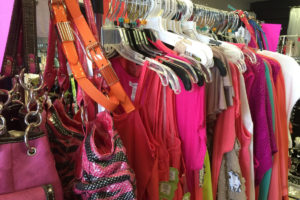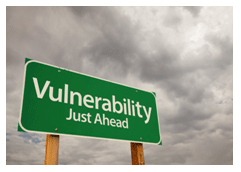 You think that you may be scoring a great deal on cheap, knock-off Electronic Article Surveillance (EAS) hard tags and labels, however, over time you find that you are missing shoplifters due to poor pick rates or hard tags that are easy to defeat. Why? To make real, quality EAS hard tags and labels it takes more effort and time. The materials and sophistication of the circuit is not something that can be easily done by a slave laborer in some dark factory in a third world nation. The labels we sell are all high-quality EAS labels and tags that are both Sensormatic and Checkpoint Systems compatible.
You think that you may be scoring a great deal on cheap, knock-off Electronic Article Surveillance (EAS) hard tags and labels, however, over time you find that you are missing shoplifters due to poor pick rates or hard tags that are easy to defeat. Why? To make real, quality EAS hard tags and labels it takes more effort and time. The materials and sophistication of the circuit is not something that can be easily done by a slave laborer in some dark factory in a third world nation. The labels we sell are all high-quality EAS labels and tags that are both Sensormatic and Checkpoint Systems compatible.
For example, we see hard tags that can be simply pried apart with a screwdriver. Or labels that fall off when the adhesive dries up. So what standards should you be applying to both EAS labels and hard tags?
LABELS:
- High-quality labels have a high pick rate (sensitivity) at your EAS system. Our labels have some of the highest pick rates around.
- Quality control is critical! Not every label manufactured meets the high standards that we set. That’s why Loss Prevention Systems’ labels that do not pass QC are marked. Those labels will probably work but we suggest that you do not use them. However, every roll of our labels has 2000+ labels. How do we do that? See the next point.
- Better value! Because the QC mark does show up from time to time, we want to make sure that you get at least 2000 labels on a roll. To achieve that target we actually add approximately 2% more labels to each roll. It is rare to have 2% marked labels on a roll and so you end up with more good labels.
- Aggressive adhesive! When you put our label on your merchandise, it is there to stay. After about an hour the adhesive sets up and that label is not going to fall off.
- Variety! We stock many sizes and shapes labels that are Sensormatic or Checkpoint Systems compatible. One type of Checkpoint compatible RF label you should check out is our clear label. It can be applied directly over your merchandise barcode and your scanner can scan right through it. This helps disguise the label and it does not cover up vital information such as directions on your merchandise packaging.
- Our labels will not reactivate after they have been deactivated! When you pass our label over a quality deactivation unit, it kills the label and the label stays dead. It will not reactivate after your customer leaves the Point-Of-Sale (POS) cash register and before your front door. Cheap labels can and will do this in many cases at an alarming rate. This causes an unnecessary alarm that you have to deal with, embarrassing your good customers.
- Most of our labels are faced with Thermal Transfer (TT) paper. That means you can print on them with your TT printer which you use to print your store pricing labels. This also helps disguise the EAS label.
HARD TAGS:
- Look at the seams of a hard tag. Are the seams welded together so that they are smooth and cannot be pried apart with a tool? Our hard tags have a tightly welded seam.
- Snag clothing? Poorly made hard tags can have a rough seam that will snag your clothing merchandise.
- Our hard tags come in a wide range of unique styles, sizes, and colors.
- The clutch mechanism in our hard tags grabs the pin and does not let go easily. The best hard tag in the world is useless unless the tag can securely hold the pin.
- We have some of the smallest hard tags on the market. They can not only be used for protecting many types of jewelry but can be used on any other product that you can clip it onto.
So don’t cut yourself short. You paid for and installed an EAS system; do not let your investment give you an inadequate return because you use cheap labels or tags. Interested in samples of Loss Prevention Systems’ labels and hard tags? Contact us for a free sample pack.
 In every career, there are people, places, and things that help to shape who you become in that career. A Retail Loss Prevention career is no different. My career in Loss Prevention goes back nearly 27 years. A long time ago in a department store not far away I was hired as a Loss Prevention Associate with only my military experience and a college degree in hand. I had absolutely no Loss Prevention background. There have been lessons learned along the way that shaped the way I approached Loss Prevention and the way I developed my style of working with people and managing others.
In every career, there are people, places, and things that help to shape who you become in that career. A Retail Loss Prevention career is no different. My career in Loss Prevention goes back nearly 27 years. A long time ago in a department store not far away I was hired as a Loss Prevention Associate with only my military experience and a college degree in hand. I had absolutely no Loss Prevention background. There have been lessons learned along the way that shaped the way I approached Loss Prevention and the way I developed my style of working with people and managing others. How many times have you caught yourself in a conversation with another manager or a supervisor discussing a seasonal merchandise question or an inventory preparation question and found yourself saying, “I think we did it this way” or “ It seems to me customers were buying such and such last year”? It can be frustrating, especially when the discussion may influence whether an item should be carried or if it was carried the prior year was it a flop? The same thing happens with inventory. Did we start prepping 5 days out? No? Maybe it was 3 days out. Having checklists can make these conversations fewer in number and improve productivity as well as sales performance.
How many times have you caught yourself in a conversation with another manager or a supervisor discussing a seasonal merchandise question or an inventory preparation question and found yourself saying, “I think we did it this way” or “ It seems to me customers were buying such and such last year”? It can be frustrating, especially when the discussion may influence whether an item should be carried or if it was carried the prior year was it a flop? The same thing happens with inventory. Did we start prepping 5 days out? No? Maybe it was 3 days out. Having checklists can make these conversations fewer in number and improve productivity as well as sales performance.
 The laws in the United States concerning shoplifting undergo changes that in some instances put the strain on the retailers and their profit margins.
The laws in the United States concerning shoplifting undergo changes that in some instances put the strain on the retailers and their profit margins. We supply and install the best anti-shoplifting equipment made. Checkpoint Systems is the gold standard of Electronic Article Surveillance (EAS) equipment. Support is off the chart. Checkpoint Systems has factory Tech’s everywhere, I mean EVERYWHERE. They have to since the majority of the top retailers in the world are using Checkpoint equipment. These Techs are not sub-contractors. They are skilled EAS, Radio Frequency (RF) experts. As an example, my Sr. Tech Dan is a former Navy Electronics Technician; he worked on highly advanced systems that protect our country.
We supply and install the best anti-shoplifting equipment made. Checkpoint Systems is the gold standard of Electronic Article Surveillance (EAS) equipment. Support is off the chart. Checkpoint Systems has factory Tech’s everywhere, I mean EVERYWHERE. They have to since the majority of the top retailers in the world are using Checkpoint equipment. These Techs are not sub-contractors. They are skilled EAS, Radio Frequency (RF) experts. As an example, my Sr. Tech Dan is a former Navy Electronics Technician; he worked on highly advanced systems that protect our country. Loss Prevention Managers and Associates use audits on a regular basis to keep track of merchandise that may be potentially high theft items. The items may be high dollar such as iPods, laptops, computer tablets and so on. The products being audited may simply be easy to steal and resell. Such items can include a variety of products ranging from drill bits to medicines, razor blades and even fragrances. Audits are an effective tool for Loss Prevention departments to quickly identify theft trends and to begin investigating when and how losses are taking place. For stores that cannot afford a Loss Prevention department, it falls upon store owners and managers to investigate missing merchandise. The question then becomes, how does a management team decide what items should be audited or when audits should take place?
Loss Prevention Managers and Associates use audits on a regular basis to keep track of merchandise that may be potentially high theft items. The items may be high dollar such as iPods, laptops, computer tablets and so on. The products being audited may simply be easy to steal and resell. Such items can include a variety of products ranging from drill bits to medicines, razor blades and even fragrances. Audits are an effective tool for Loss Prevention departments to quickly identify theft trends and to begin investigating when and how losses are taking place. For stores that cannot afford a Loss Prevention department, it falls upon store owners and managers to investigate missing merchandise. The question then becomes, how does a management team decide what items should be audited or when audits should take place?  Reviewing your store policies today and training your employees about the ramification of not following them properly is imperative. The consequences of not following those policies properly are too costly to postpone. Employees, as they are human, try to use shortcuts or in some instances, take the easy way out while doing some chores without thinking it may affect the bottom line at the end of the day. Profits for a store cannot be thought of as profits for the owner only, employment and benefits for the employees are inherently tied to those of the owner. If the owner must close the store for loses, the employees lose as well.
Reviewing your store policies today and training your employees about the ramification of not following them properly is imperative. The consequences of not following those policies properly are too costly to postpone. Employees, as they are human, try to use shortcuts or in some instances, take the easy way out while doing some chores without thinking it may affect the bottom line at the end of the day. Profits for a store cannot be thought of as profits for the owner only, employment and benefits for the employees are inherently tied to those of the owner. If the owner must close the store for loses, the employees lose as well. Inventory in a retail store can offer the management and the loss prevention team a clear picture of whether their efforts are working or they need to modify something entirely different.
Inventory in a retail store can offer the management and the loss prevention team a clear picture of whether their efforts are working or they need to modify something entirely different. 